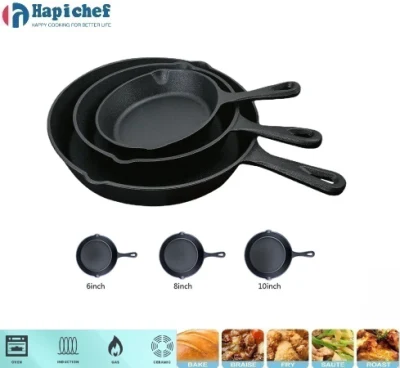Tips for Using Cast Iron Skillets in the Oven for Best Cooking Results
The Benefits and Best Practices for Using Cast Iron Skillets in the Oven
Cast iron skillets have long been a staple in kitchens around the world, celebrated for their versatility, durability, and superior heat retention. Many manufacturers are dedicated to producing high-quality cast iron cookware, ensuring that they can withstand the rigors of both stovetop and oven cooking. This article explores the advantages of using cast iron skillets in the oven and provides tips on best practices to maximize their potential.
Versatility and Performance
One of the significant benefits of cast iron skillets is their ability to transfer from stovetop to oven seamlessly. This versatility is particularly beneficial for recipes that require both searing and baking. For instance, you can start by browning a protein on the stovetop to lock in the flavors and then transfer the skillet directly to the oven for even cooking. Many leading manufacturers have designed their skillets to withstand temperatures up to 500 degrees Fahrenheit, making them suitable for a wide variety of cooking methods, including roasting, frying, and baking.
In addition to their heat tolerance, cast iron skillets excel at retaining heat. They are ideal for dishes that benefit from steady, even cooking, such as cornbread, frittatas, baked pasta, and even desserts like skillet cookies. The non-stick surface created through proper seasoning over time allows for easy food release, provided you follow the manufacturer's guidelines for maintenance and care.
Tips for Using Cast Iron Skillets in the Oven
1. Preheat the Skillet Before adding your ingredients, preheat your cast iron skillet in the oven. This ensures that the cooking surface is hot enough to create a good sear and helps in evenly baking your dish.
cast iron skillet in oven manufacturer

2. Seasoning is Key A well-seasoned cast iron skillet not only improves food release but also enhances flavor. Manufacturers often recommend applying a light coat of oil on the skillet’s surface before use. Make sure to use oils with a high smoke point, such as vegetable or canola oil.
3. Avoid Thermal Shock Sudden temperature changes can cause your skillet to crack or warp. Always ensure that your skillet is at room temperature before placing it in a hot oven or on a cold stovetop. If you're moving it from the fridge, allow it to sit for a few minutes to acclimate.
4. Handle with Care Cast iron skillets can get extremely hot, so always use oven mitts or pot holders when handling them. This is crucial whether you're removing it from the oven or placing it back on the stovetop.
5. Cleaning and Maintenance After using your skillet in the oven, clean it properly to maintain its seasoning. Avoid soap which can strip away the seasoning, and instead, scrub with warm water and use a soft brush. Dry it thoroughly and apply a thin layer of oil to keep it conditioned.
Conclusion
Ultimately, cast iron skillets represent a blend of tradition and practicality in modern cooking. Whether you're a culinary novice or a seasoned chef, investing in a high-quality cast iron skillet can revolutionize your cooking experience, especially when used in the oven. By understanding how to properly utilize and care for these versatile pieces of cookware, you can create an array of delicious meals while ensuring that your skillet remains a cherished tool in your kitchen for years to come. With a little attention to detail and a commitment to proper maintenance, a cast iron skillet can be a versatile and reliable companion for countless culinary adventures.
-
Why Every Kitchen Needs a Casserole Cast Iron DishNewsJun.24,2025
-
Experience the Tradition and Quality of Cast Iron CookwareNewsJun.24,2025
-
Double Sided Cast Iron Grill PanNewsJun.24,2025
-
Cast Iron Dutch Ovens You’ll Actually UseNewsJun.24,2025
-
Buy Cast Iron Griddle for Everyday CookingNewsJun.24,2025
-
Barbecue Iron Grill Cooking PowerNewsJun.24,2025
-
Standard Product Lines from Cast Iron Cookware SuppliersNewsJun.11,2025
